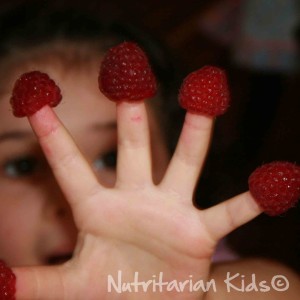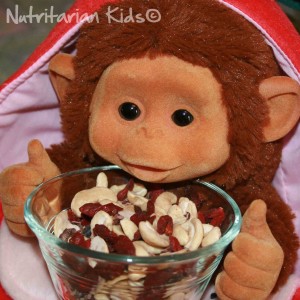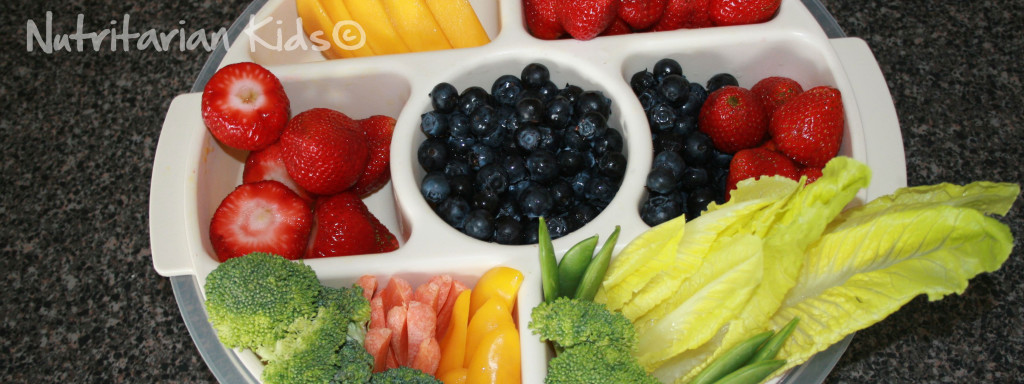Picky Eaters & The Transition
It’s one thing to have acquired healthy eating habits long before your children were born so that eating healthy for them was just a natural part of life from the start; It’s another thing however to try and transition children from the Standard American Diet, to a whole foods, plant based, nutritarian one. Unfortunately for many of us, it’s only after becoming parents ourselves that we have started to recognize the dangers of the Standard American Diet and now want to make significant changes so that our children don’t succumb to the same, debilitating & preventable diseases that affect so many today.
Habits are hard to break and food preferences are some of the hardest. Because “taste is a learned phenomenon” we become comfortable with the foods we are use to or those foods that we grew up eating. This can make transitioning picky eaters a real challenge. On a more positive note, because of this same fact, that “taste is a learned phenomenon,” it instills in us hope that change can be realized. It really can!
I have learned a few valuable lessons during our own personal journey and attempt to transition our children and our selves, that I would like to share with you. Make no mistake; we are still on this journey as every day presents new challenges to overcome. There are habits that we have carried with us our whole lives that seemed almost second nature and thus became the same to our children…so it really has been a process, but improvements have come and we are noticing the rewards.
The following is a list of some ideas & discoveries we have made that have helped to transition our family that we hope will benefit you as well:
1. Be a Better Mirror: Of course you know that it is we parents that set the example. We cannot expect our children to change if we are not changing ourselves. We must be willing to lead the way. Children learn more from what we do than what we say. In other words, we are their MIRRORS. Have you ever had the  experience of reprimanding a child, telling them: don’t do this, don’t do that, only to discover that they haven’t heard a word you said because they are more interested in how you look when you said it? Either they are cowering away because of how scary you appear, or half smiling because you really just look ridiculous! What exactly did they learn from the experience anyways? I suggest that they learned it’s ok to loose their temper, it’s ok to look scary and yell, or even better it’s ok to look ridiculous because that’s what mommy does. Oh and by the way… “what was that thing you were telling me not to do again?”
experience of reprimanding a child, telling them: don’t do this, don’t do that, only to discover that they haven’t heard a word you said because they are more interested in how you look when you said it? Either they are cowering away because of how scary you appear, or half smiling because you really just look ridiculous! What exactly did they learn from the experience anyways? I suggest that they learned it’s ok to loose their temper, it’s ok to look scary and yell, or even better it’s ok to look ridiculous because that’s what mommy does. Oh and by the way… “what was that thing you were telling me not to do again?”
2. Clean House: Get rid of the candy, get rid of the treats. I quickly realized that I could significantly reduce the number of times I said “NO” to my children in a day just by removing the temptation from the house. No one really wants to say NO to their kids, so get rid of the culprits that cause the problem in the first place. As long as you replace them with good healthy options, your children wont miss them as much as you think…at least not for long.
3. Make up your Mind & Find your Motivation: We have discovered that it takes more than just saying you will change to make it happen. As a parent you’ve got to reach deep down and figure out the real reasons for making this change and you’ve got to have faith that it will be worth it. This way you’ve got something solid to hold on to when your child refuses to eat your beautiful home made dinner 5 days in a row. You then know that there is a bigger purpose…a better quality of life ahead, freedom from illness, a higher likelihood of a longer life, less impact on the environment and the energy not only to run & play, but also to think more clearly.
4. Don’t Give Up: Doctor Fuhrman talks in his book Disease Proof Your Child about how it takes between 8-15 times for a person to accept a new food as familiar. This was especially enlightening and encouraging to me during those times that I thought I would never be able to get my kids to eat kale. It wasn’t on the first, third, or even the fifth time…but now it’s a staple in our home.
5. Take Advantage of Teaching Opportunities: Children are really smart! They are creating millions of new connections in their growing and developing brains each day. It’s never too early to teach them about food and why we eat the way that we do. Especially when their friends may eat so differently. Trust that eventually they will learn to make good decisions for themselves. Give them the chance to do so by teaching them today why it’s worth it. Of course teach them in ways that they can understand for their age level. Right now, what works for us is that my three year olds for example, understand that: ORANGE food helps them see better, GREEN MEANS GOOD, so we try to eat as much green food as we can, NUTS give us energy and help us to “THINK AND THINK AND THINK” like Pinky Do… and MAGIC BEANS give us SUPER STRENGTH POWERS because our muscles & bones are getting stronger! Kids really do want to make good choices. They notice the things that make them feel good and the things that don’t, even when they are small.
6. Rediscover Flavours Together: As I have said before, if your family is use to a high salt, high sugar & high oil diet, you are inevitably going to think that the nutritarian foods you are making taste bland. These strong flavours (especially salt & refined sugar) literally dull our ability to recognize the flavours of natural  foods. It really is true though that if you can just stick to it and resist the temptation to add these ingredients to your cooking, your taste will change and these natural whole foods will come alive in ways you never expected. There will be a day, not too far off when you will try eating out at your old favourite restaurant and the things you use to order just taste waaaay over salted. A simple strawberry will taste sweeter, your cob of corn won’t need to be buttered or salted, and a tomato fresh from the garden will appear as one of gods most beautiful and tempting creations. What’s even better is that if you’ve got young children, this transition will probably happen even faster for them. If you go strong, you will notice significant changes even within a few short weeks.
foods. It really is true though that if you can just stick to it and resist the temptation to add these ingredients to your cooking, your taste will change and these natural whole foods will come alive in ways you never expected. There will be a day, not too far off when you will try eating out at your old favourite restaurant and the things you use to order just taste waaaay over salted. A simple strawberry will taste sweeter, your cob of corn won’t need to be buttered or salted, and a tomato fresh from the garden will appear as one of gods most beautiful and tempting creations. What’s even better is that if you’ve got young children, this transition will probably happen even faster for them. If you go strong, you will notice significant changes even within a few short weeks.
7. Don’t Force It: This is a touchy subject because on one hand I feel that my kids have to learn to do hard things some times and that mom is not going to tailor every meal to each person individually. On the other hand, I don’t think it’s good to force them to eat what was made. After all, the last thing I want is to have super emotional eaters. What we’ve been doing that seems to be working is providing dinner and encouraging them to eat it in positive and fun ways. We build on things that they already like, for example, Kale started out as “special broccoli” because they already loved baby broccoli trees and when they liked it for what it was, it got a “new name” called “Kale”. Edamame were “Giant Peas” for a while before they were given that fancy name of“Edamame”. On the days that dinner isn’t as successful as we hoped, we don’t stress too much because we know that any of the snacks that we offered earlier in the day were also healthy. Sometime we even end up helping them eat by feeding them. Kids really like this for some reason and although I don’t like for it to turn into a habit…if it gets them to eat some healthy foods in the beginning? It’s worth my time and effort.
8. Hungry Hippo’s: We have found that our kids do better at our sit down dinnertime meals when they are actually hungry. Although we like to provide healthy snacks during the day, I try not to fill them up right before dinner as I find they are more willing to try new foods when they are actually hungry. If I do provide a precursor snack to dinner it’s usually something that I would have fed them for dinner anyways such as fresh sliced cucumbers or a handful of carrot sticks.
9. Eating As Guests: It is very difficult to compete with junk food. I accept the fact that if we go out or go to someone else’s house for dinner and there is an unhealthy and healthy option, that the unhealthy option is going to win most of the time. You just can’t compete sometimes and the kids at least while they are young and don’t know better, will choose what they perceive as tasting better nearly every time regardless of the consequences. I don’t feel the need to reprimand them for this…and I don’t feel the need to stop them every time out of respect for those around or those who have provided the food. After all, food is food, and there are too many people in this world who have none. I’m sure there are those who feel differently but our take on it is that we eat as healthy as we can in our home and then when we go to someone else’s home or out, we respect their kindness, are so grateful for their generosity and realize that the incident is short lived. I think it’s better to roll with the punches on this one.
10. On the Road Again: We have found it very useful to try to be a little more prepared when traveling by providing healthy snack options in the car so when we roll past  restaurants on our way from here to there, our tummies aren’t growling and we aren’t tempted to stop and get something that we know we will regret later. We love to have fresh cleaned & cut up fruit, pita chips & healthy dip, seaweed snacks, water bottles & trail mixes in the car with us. We travel a lot and have found it useful to have a food bucket or cooler where ever we go…but we will talk more about this later.
restaurants on our way from here to there, our tummies aren’t growling and we aren’t tempted to stop and get something that we know we will regret later. We love to have fresh cleaned & cut up fruit, pita chips & healthy dip, seaweed snacks, water bottles & trail mixes in the car with us. We travel a lot and have found it useful to have a food bucket or cooler where ever we go…but we will talk more about this later.
11. Keep it Simple: This is one of my biggest challenges because I sometimes think that the meal has to be elaborate to be good. I find that the meals that my kids love the most are usually the easiest and simplest ones to make. Enjoying the food for what it is. I also find that if I always make things too much work then I quit wanting to do the work. Trying to keep things simple just seems to work better for everyone most of the time.
12. Build on Things They Enjoy: You don’t have to have it all perfect right away. Just keep building. If you must, start with a just a few healthy options on the plate that you know they will enjoy and then make gradual changes, switching one thing for another. Small changes over a longer period of time often seem to have longer lasting effects in the end.
13. Keep a food journal: For those of you who worry about your children not getting enough of the right nutrients, keep a food journal. This can be very enlightening by helping you identify bad habit or trends as well as identifying the successes. Make sure to make notes of what the kids really liked and what they didn’t so you can make changes as necessary. Not that you will quit offering something just because they don’t like it, but perhaps you can try presenting it in a different way such as in a soup or smoothie. Be sure to write down any new creations so that if they are a hit you can recreate them.
14. Blending soups: Soups are great because you can get so many healthful foods into them by retaining a lot of the nutrients right in the broth that would otherwise be lost and then it’s nothing to quickly blend a soup into a smooth uniform texture if you have some children who initially get turned off by the looks of particular foods.
15. Coloured Containers: Green smoothies, juices and blended salads are a great way to get the greens into kids as we know but sometimes the color can turn off some kids. We found it useful to use colored cups with a lid and reusable glass straws so that regardless of the color of the drink, the kids never really cared because they only saw, “pink” or “purple” for example. This seems like a simple thing but really seemed to help in the beginning
16. Snack Time: We find it useful to provide healthy snacks in a snack tray on the table for our kids to reach for. In the morning we cut a few “featured snacks” like fresh cut strawberries & mangos, cherry tomatoes, cucumbers & carrots, kale chips & nuts or pita chips & bean dip. You’ll be amazed to see them eat it…even if at first it’s only out of curiosity. If your kids go to school you can have this tray available when they first get home to tie them over until dinner time. That way they are not constantly asking for a treat that they’ve dreamed up in their minds because their tummies are already satisfied.
17. Helping Hands: I know it can be a real test of patience to have your kids help in the kitchen sometimes but this has been one of the biggest ways to success that  we’ve had in getting our kids to eat healthy. Kids naturally love to help and learn and I have found that they are way more willing to try new things when they have taken part in its creation. Not to mention all the other benefits that working together has. My daughter loves the movie Ratatouille and now thinks it’s fun to experiment with food combining so we do just that together in the kitchen. It’s an adventure!
we’ve had in getting our kids to eat healthy. Kids naturally love to help and learn and I have found that they are way more willing to try new things when they have taken part in its creation. Not to mention all the other benefits that working together has. My daughter loves the movie Ratatouille and now thinks it’s fun to experiment with food combining so we do just that together in the kitchen. It’s an adventure!
18. Food Games: Taste Testers was one of my favourite games as a kid. My friends and I would separately pick a selection of things from the kitchen to try. We would then blind fold each other and serve little samples of the different foods or spices and have fun trying to guess what they were. Age appropriate games like these are great for helping kids appreciate & learn about different foods & flavours.
I’m sure there are a lot more suggestions our there and we will continue to add tips and ideas throughout this website as we discover them or as you share your ideas with us…which we always encourage you to do in a positive and constructive way. In the end, I hope we have done more to encourage you rather than discourage and that you feel somewhat armed with the tools to make the changes that you feel you need to make for your own family. If you want to get started feeding your kids more whole foods you can jump over to Nutritarian Kids Recipes to gain ideas. Hopefully you will find something there for everyone in the family to enjoy. If you feel you need a little more motivation, check out this video from TED talks about the effects that being a “Better Mirror for your Children” can have. Hope you enjoy!





